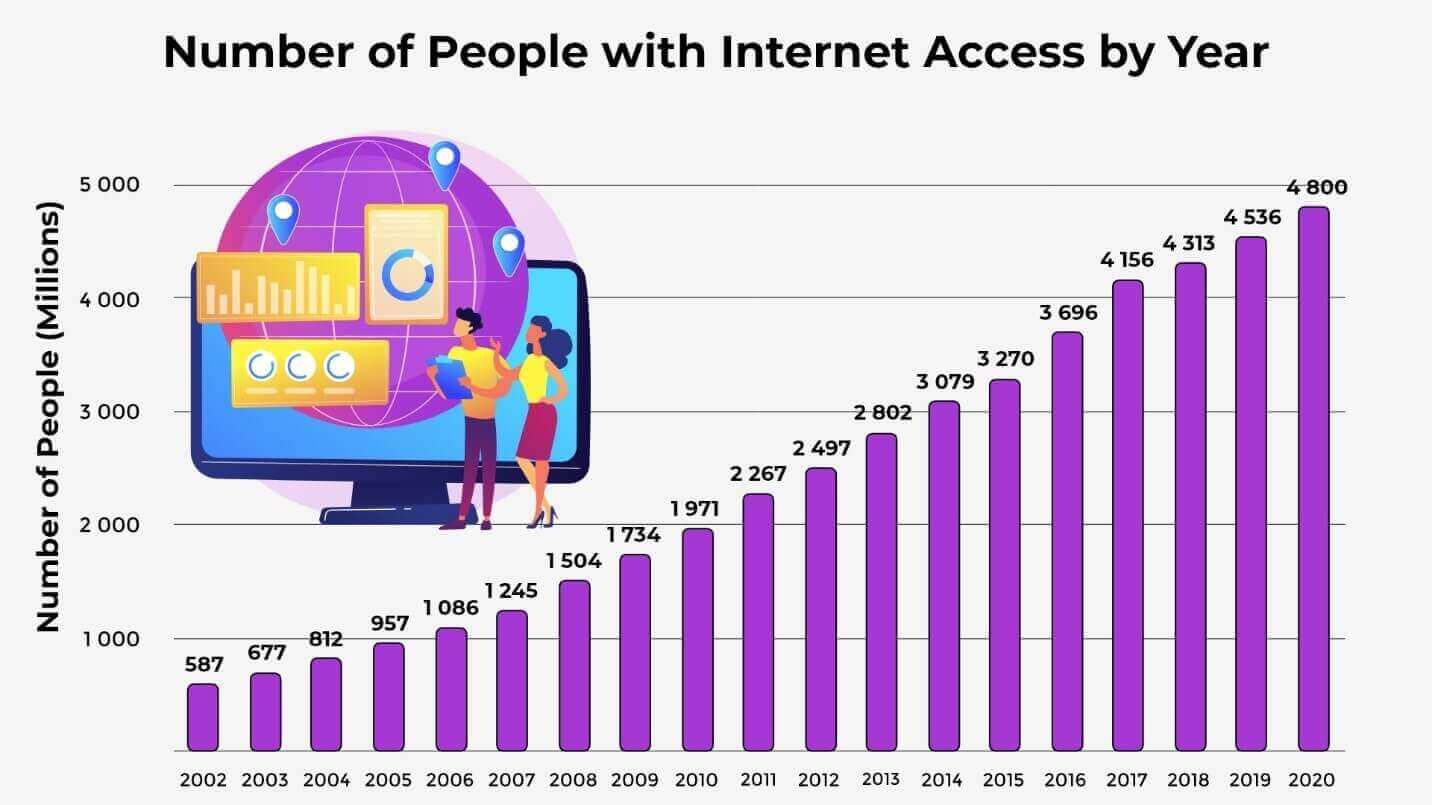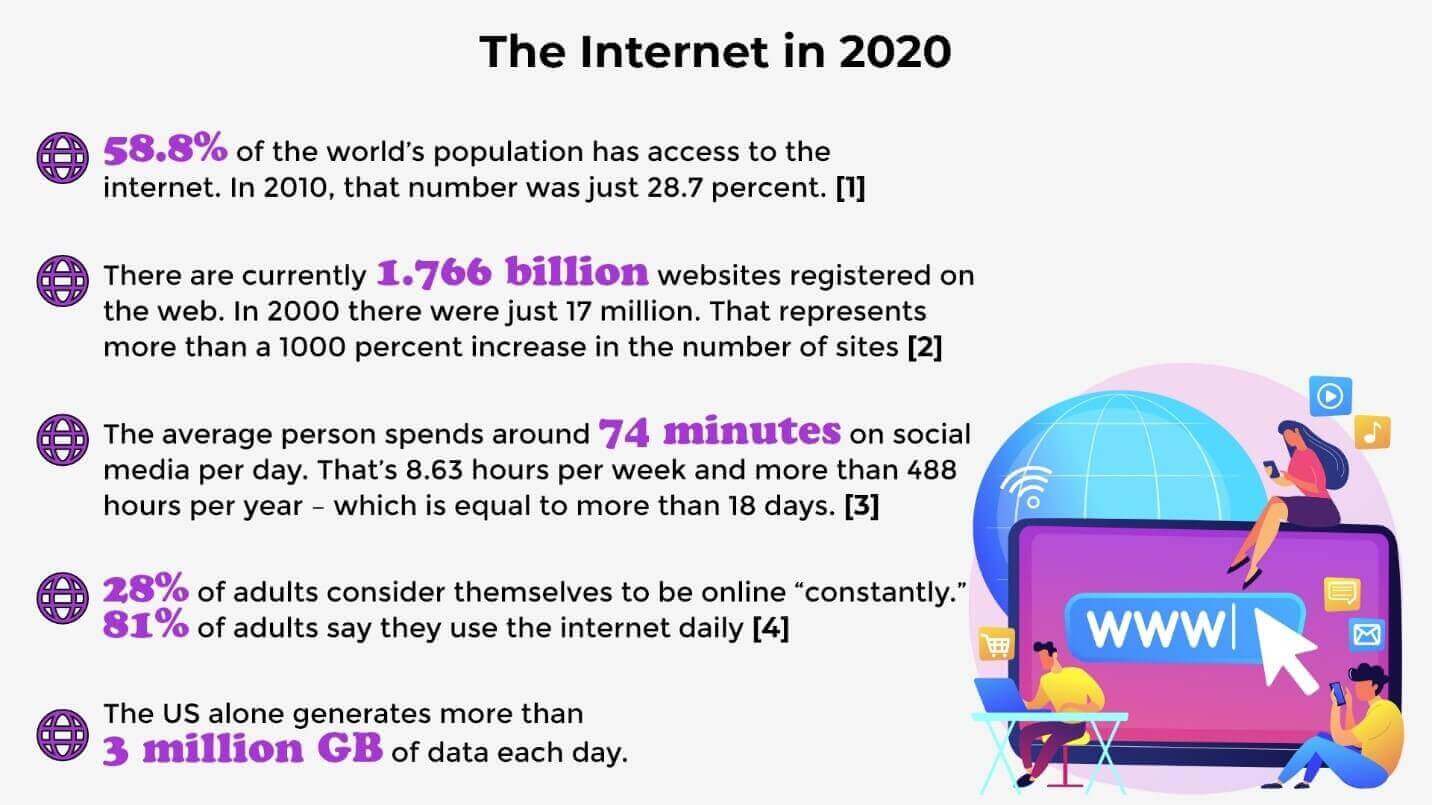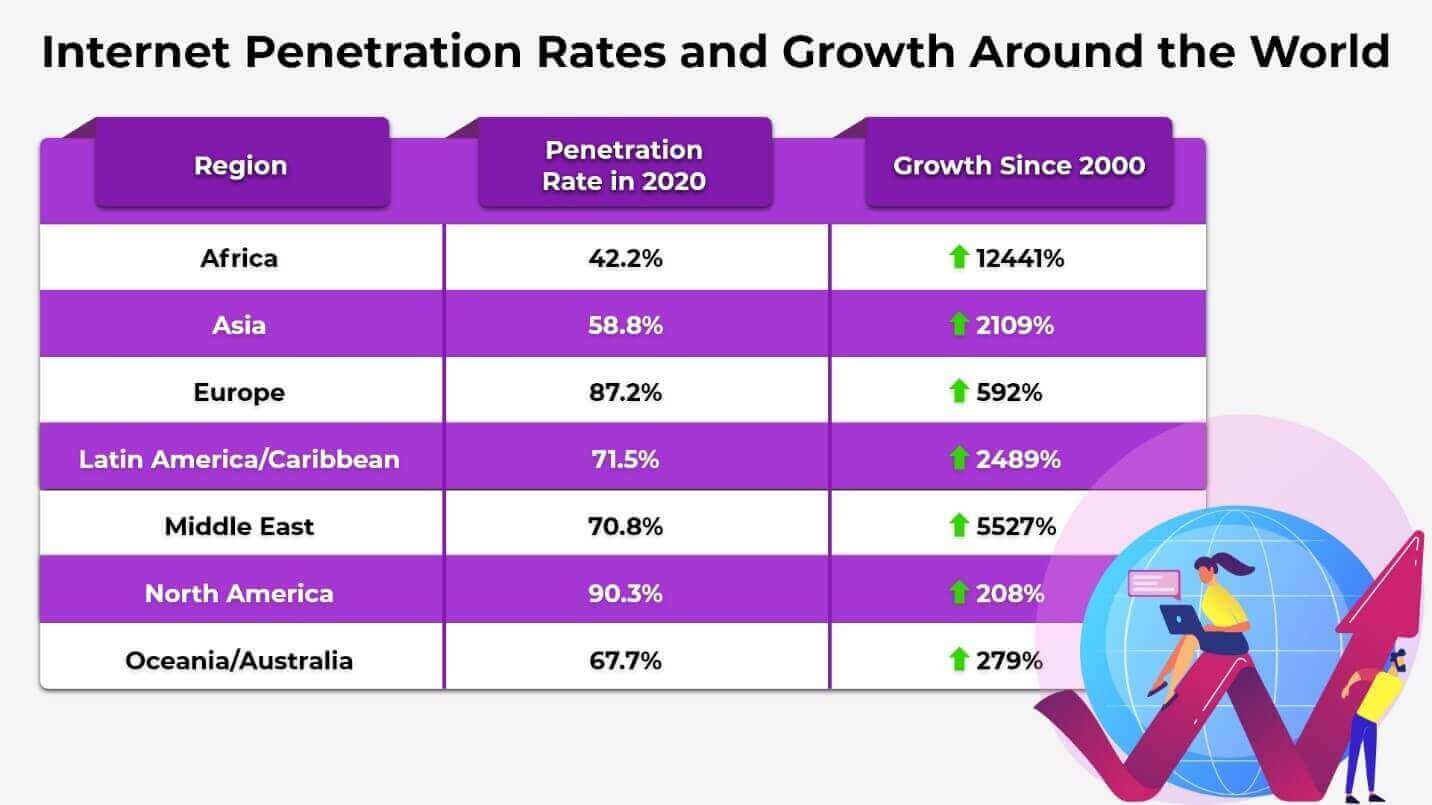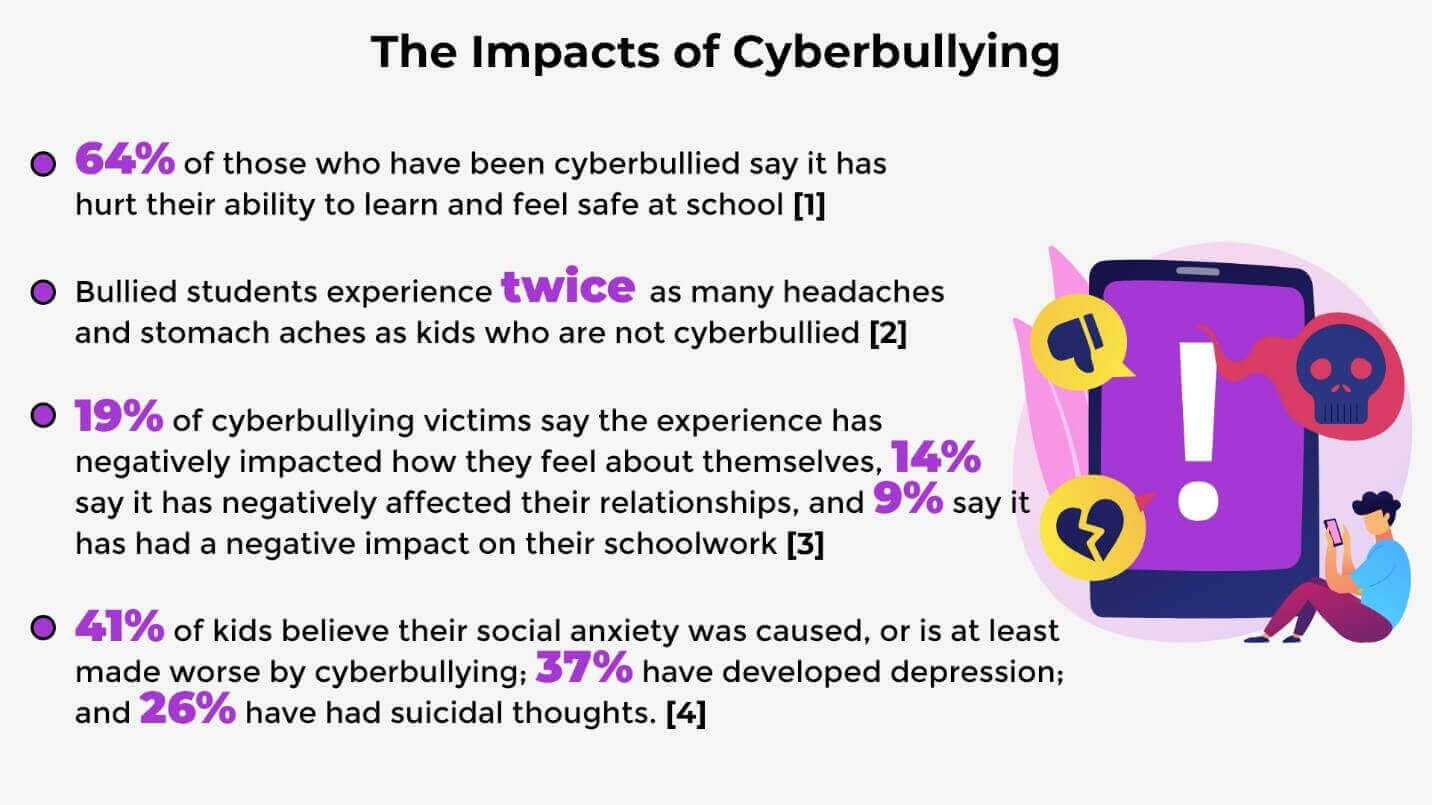10 Must Know Statistics About Cyberbullying
Table of Contents
Most of us have happy memories related to the internet. We make and maintain connections thanks to the internet. We share photos and jokes. And the internet grants us wide access to education, jobs, and entertainment.
But there is a darker side to the internet that most of us know all too well. We all know someone who has been a victim of hacking, identity theft, dating fraud, etc. But there’s another internet behavior that can be very dangerous, especially for young people, and that is cyberbullying.
Cyberbullying is often very similar to real-life bullying, except that it takes place online, which makes it more potentially public. Cyberbullying is a damaging form of communication that can negatively impact someone’s mental health. Even worse, children and teens are most often the victims.
Internet use around the world continues to grow, and so does the prevalence of cyberbullying. We’ve compiled the following statistics about internet use and cyberbullying. We hope you’ll see the gravity of the problem, and be inspired to do your part to resist cyberbullying and help any victims.
Internet Use Stats
Ever since the internet went mainstream in the early 1990s – mainly with the release of the Mosaic and Netscape Browsers – the number of people around the world connected to the web has increased dramatically. Much of this rise has taken place over the past two decades, with the number of internet users growing from just under 1 billion in 2002 to nearly 5 billion in 2020. Here’s a graph that illustrates growth over the years:

Here are some more general internet stats to consider:

As you can see, the internet is a major part of people’s daily lives worldwide, and its presence and impact have been growing exponentially. It’s likely the growth rate will slow down as we get closer and closer to universal use, but even so, we can say that the digital revolution is still very much underway.
Internet Use Around the World
Internet use, and the growth in the number of internet users, are not growing at equal rates worldwide. Europe and North America, which got the internet first, and have expanded use thanks to their more advanced economies, have the highest penetration rates yet the slowest growth.
There are fewer internet users in other regions of the world, but penetration rates are growing rapidly. Here are some numbers to show you what’s been going on over the past 20 years:

As you can see, internet use is growing on the African continent at a stunning rate. Asia, the Middle East, and Latin America/Caribbean are also showing rapid expansion.
Growth rates in Europe are higher thanks mainly to the impressive growth occurring in Eastern Europe, which has been undergoing considerable change since the fall of the Soviet Union in the early 1990s.
In North America and Oceania/Australia, growth is not as quick, but the number of internet users has still more than doubled since 2000.
These growth rates are likely to slow. But the figures show how important the internet has become to modern-day life. For many nations, it has become a top priority to ensure people have access to a solid connection.
Statistics About Kids and the Internet
Internet use is pervasive around the world, and it’s growing quickly. But is this happening just with older people? Absolutely not. More and more kids are online now than ever in the past.
1. 95 Percent of Teens are Connected to the Internet; 85 Percent Are Social Media Users
These numbers collected from the U.S. by the Pew Research Center how that the internet is full of young users. Kids are going online in massive numbers, both to study and to have fun. On the one hand, this is excellent news, as it means children will have access to all the positive things the internet has to offer. But on the other hand, we don’t really know the long-term impact of so much online exposure so early in a child’s life.
2. 45 percent of Teens Are Online on a “Near Constant" Basis; 44 percent are Online “Several Times Per Day
This number, derived from the same Pew Research Center study mentioned above – is considerably lower than for adults, but this makes sense. Many teenagers, especially those coming from low-income households, do not have access to a smartphone or tablet, which would allow them to be online constantly.
Plus, kids spend most of their days in school, and while many still work around the rules, this likely holds some of them back. Still, though, these numbers show that today’s kids truly are the first digital natives, meaning they will grow up more comfortable with these technologies than previous generations.
3. American Teenagers Spend Around 9 Hours Per Day Consuming Digital Media
This is a truly remarkable number that should, for some, raise some concern, mainly because so much time in front of a screen consuming media means kids are likely spending a lot of time multi-tasking. They’re online chatting with their friends when they’re supposed to be doing homework, watching Tik Toks or YouTube videos when they’re hanging out with their friends, and playing online games whenever they get the chance.
Of course, some of this time spent consuming media goes towards school and other more purposeful activities. Still, kids spending so much time on the internet should be alarming, especially considering some of the risks involved with being online.
4. Teens Are Unsure of the Impact of Social Media and the Internet
When asked about the impact of social media and the internet, 31 percent said it had a mostly positive effect, with 40 percent of these respondents citing the ability to connect with friends and family as the main reason for this effect. On the other side, 24 percent reported social media and the internet as having a “mostly negative" impact, with 27 percent of these kids pointing to bullying and rumor spreading as the reason for their views.
However, almost the same amount of kids –45 percent in total – say that social media has neither a positive or negative impact, which is interesting since they/we spend so much time using it. Perhaps we should all start asking why we spend so much time on platforms that we aren’t sure provide us with benefits?
The Dangers Kids Face Online: What is Cyberbullying?
The online environment is one that children are clearly tapping into, and while we just said this is a good thing, we also need to be aware that this can also be dangerous. We all know that the internet can be both wonderful and terrifying, often at the same time. And while we as adults might be better equipped to handle this, children often aren’t.
Interestingly, one of the biggest dangers kids face when they’re online is from other people. Cyberbullying is defined by StopBullying.gov and the National Crime Prevention Center as “bullying that takes place over digital devices such as cell phones, computers, and tablets, and can take place over SMS and text messages, social media, forums, online gaming platforms, and any other app or service that allows people to view, participate with, and share content."
Stats About Cyberbullying
This is a very serious problem in our society. The statistics we’ve compiled below should help clarify why it’s so serious and why steps need to be taken to mitigate this problem as soon as possible.
5. 36.5 percent of People Feel They’ve Been Cyberbullied
At first glance, this might not seem like a lot. But if we think about it more closely, we can see that around one in every three people has experienced cyberbullying. As a society, if we hope to find common ground and work together, we need to create safer online environments, especially since so much of our lives take place in these arenas.
What’s more, 17 percent of people say they have experienced cyberbullying in the past 30 days, suggesting this is very much an ongoing problem.
Rates of Cyberbullying Have Doubled Since 2007
Part of this has to do with the simple fact that more and more people are online. Also, this phenomenon is being studied more now than ever, meaning cyberbullying likely flew under the radar before. But this still doesn’t take away from the very real fact that we are getting nastier with one another when we’re online. Part of this could have to do with the tone of the political conversations we have with one another on the internet, but further investigation is needed to figure out what’s going on. No matter the reason, cyberbullying is on the rise and needs to be stopped.
6. 87 percent of Young People Have Seen Cyberbullying Online
A genuinely astounding statistic that shows the people most impacted by cyberbullying are our children. Just like traditional bullying has been found to have long-lasting effects on a person’s mental stability and feelings of self-worth, so too can cyberbullying. This puts our kids in grave danger and makes it much harder for them to figure out the best way to navigate this world.
7. 40 Percent of All US Adults Have Personally Experienced Cyberbullying
However, before we go off and say that cyberbullying is just a problem amongst kids, we should look at numbers like these and remind ourselves that the issue is far more pervasive in society. Possibly because interacting online feels “lower stake," or because you are sometimes dealing with strangers, adults seem to be more than willing to cause each other harm when interacting online. Furthermore, three-quarters of US adults have seen cyberbullying online, once again reminding us that this is a widespread problem that needs to be taken very seriously.
8. 42 Percent of Cyberbullying Takes Place on Instagram; 37 Percent Takes Place on Facebook
This shouldn’t come as too much of a surprise, as these two platforms are far and away the most popular social media sites available. However, cyberbullying does also take place in other areas of the internet. Here’s a graph that will give you a better idea of where cyberbullying is taking place:
9. 69 Percent of People Report Having Been Abusive to Someone Online; 15 Percent Admit to Cyberbullying
These numbers, while already high, are likely much lower than what’s happening in reality. This is because these numbers only come from those who were honest enough to admit they’ve done harm to someone on the internet or who were able to recognize having done so. Many people engage in cyberbullying but don’t even know they are doing it. This is hugely problematic since there is little reason to believe they will stop anytime soon. Hopefully, as we become more aware of cyberbullying and its pervasiveness, we will intervene when someone is mean to someone else online.
10. Some People Are More Likely to Be Victims of Cyberbullying than Others
Tragically, some individuals are more likely to experience cyberbullying than others. Here are just a few stats to help give you an idea:
- 36 percent of girls report having been cyberbullied
- Just 26 percent of boys report having been victims of cyberbullying
- More than 50 percent of students who identify as being LGBTQIA+ report having been cyberbullied at some point in their lives.
The Impacts of Cyberbullying
Cyberbullying is obviously a big issue in our society, which needs to be addressed quickly and effectively. One way to make it clear why we need to act so decisively is to look at some of the impacts cyberbullying can have on a person. Below are some stats that show just how damaging cyberbullying can be, especially to young people:

As you can clearly see, cyberbullying is not some minor inconvenience. Instead, it can be a source of trauma, one that can have long-lasting impacts on a person’s ability to function in society and care for themselves. These numbers make the case on their own that something must be done about cyberbullying.
How to Spot and Prevent Cyberbullying
We’ve mentioned many times that the numbers all tell us one thing: cyberbullying is happening, and it must be stopped. We hope you agree, and if you do, know that there are two parts to improving this situation.
First, we must identify the victims of cyberbullying and help them recover from whatever damage the experience may have caused. Next, we need to get better at recognizing when cyberbullying is going on so that we can stop being passive bystanders and start speaking up, letting bullies know that they’re not welcome.
Those who are victims of cyberbullying tend to exhibit some or all of the following behaviors:
- They become shy and withdrawn
- They are moody, agitated, anxious, or stressed out
- They act more aggressively towards others
- They protest more about going to school nor perhaps skip it altogether
- They get into trouble at school
- Their academic performance begins to struggle
- They stop using the computer or other internet-connected devices
- Their eating or sleeping habits change
- They attempt self-harm or suicide
- They start to hang out with new people rather suddenly
If you know someone who is active online and shows some of these signs, consider reaching out to them to find out what is going on. Something may be happening that they don’t want to talk about, but often they open up when you make the first move. Once you’ve confirmed this is the issue, you can begin to help and perhaps even intervene so that the bully can no longer operate.
Another thing we need to do is to get better at spotting the cyberbullies that are out there. More people do this than we think, and they may be doing it without knowing the harm they’re causing. Some things cyberbullies tend to do:
- Stopping computer use when someone comes near
- Looking nervous or jumpy while online
- Being secretive about their online activities
- Spending lots of time on the computer
- Becoming angry or upset when they can’t access the internet
If you see these signs, or if you witness someone causing someone else harm on the internet, you must act. With children, probably the best thing to do is to get in touch with teachers, principals, or parents so that you can work out a solution. You can be a bit more direct with adults and simply let the person know that what they are doing is not okay. Bullies act the way they do because it makes them feel powerful and because our silence in the past has made them feel like they are operating in a safe space. If we get better at identifying cyberbullying and begin to speak out against it, then we can start to reduce its prevalence in our lives and help out those who are struggling.
Conclusion
From all of these statistics, we have learned that internet use is growing rapidly worldwide, which is terrific news as this opens up more doors and allows our global society to connect more and grow. However, on the other side of this is something terrible: cyberbullying. This problem is real and can have severe, long-term impacts on victims. But now that we know a bit more about it, we can get better at spotting it and can start telling cyberbullies that they are no longer welcome in our online world.

